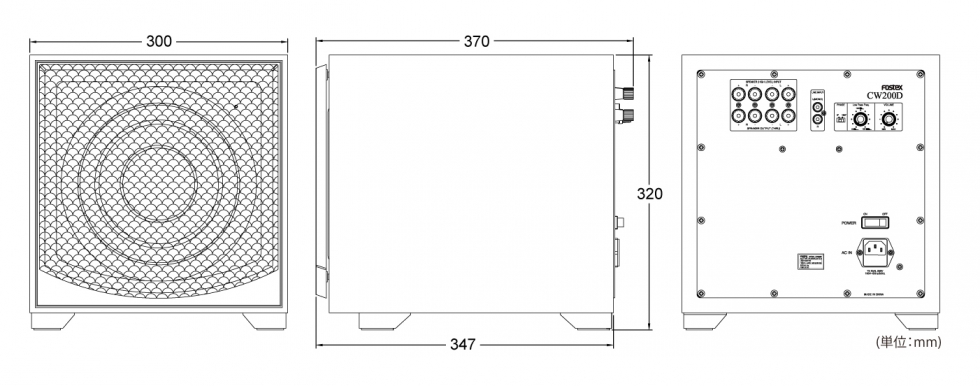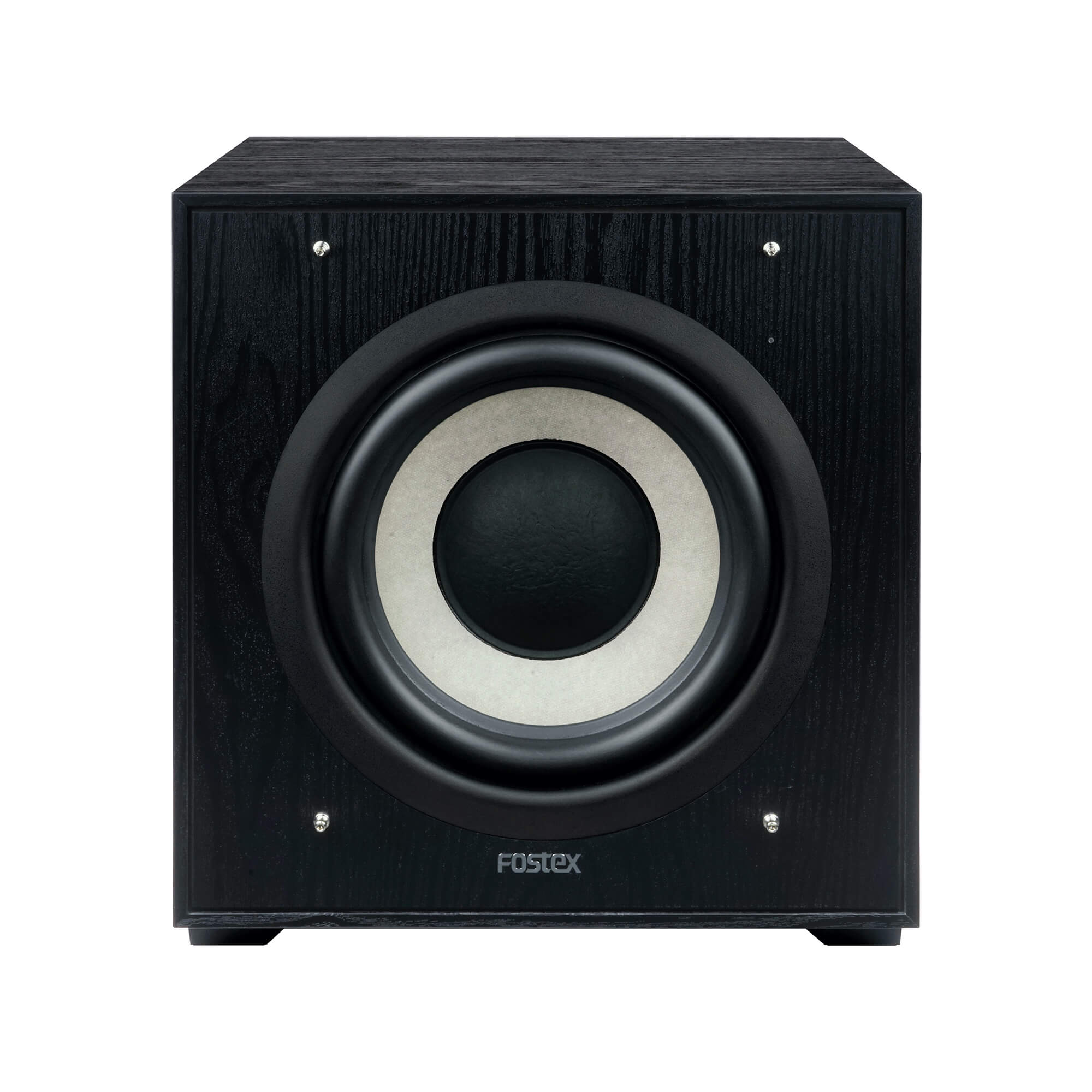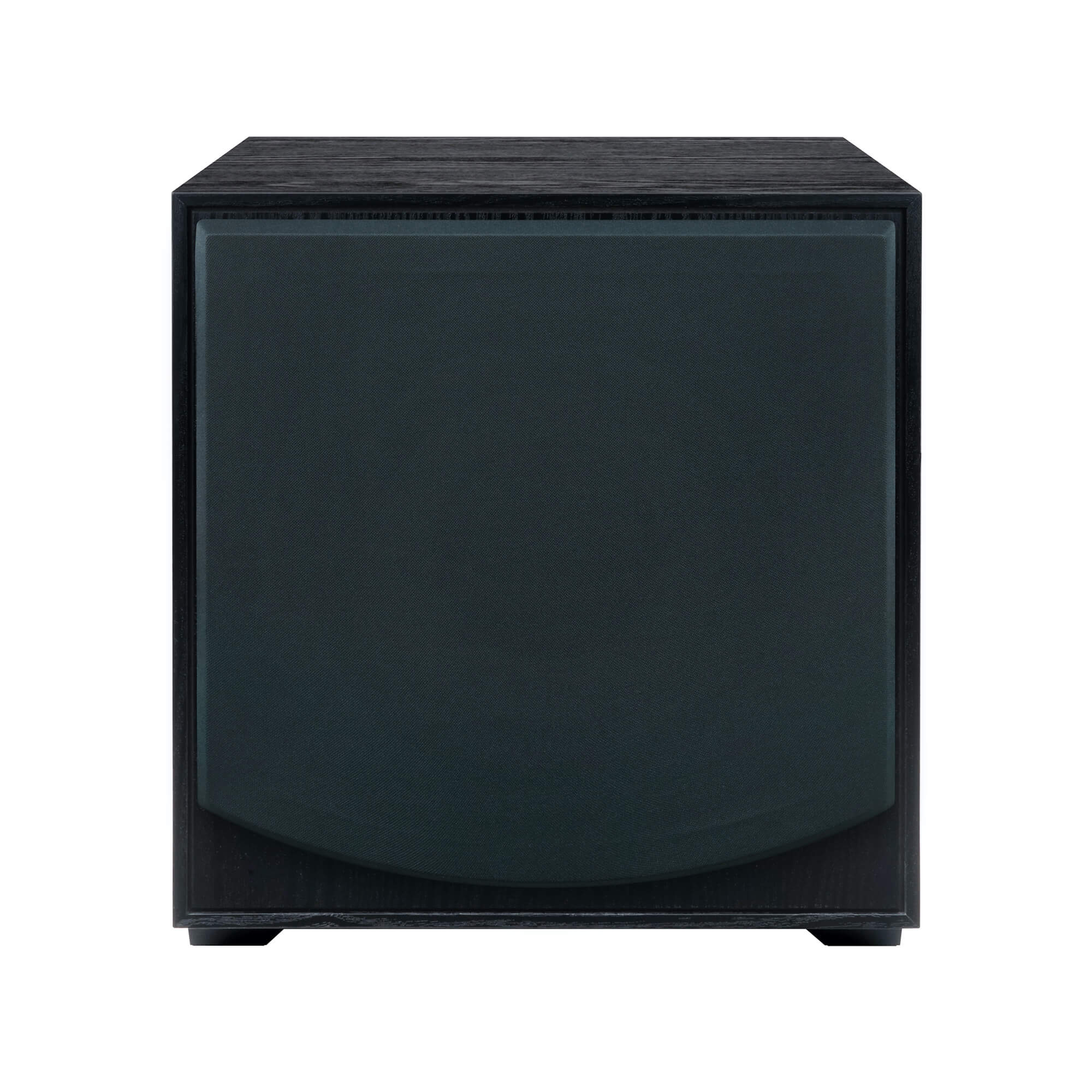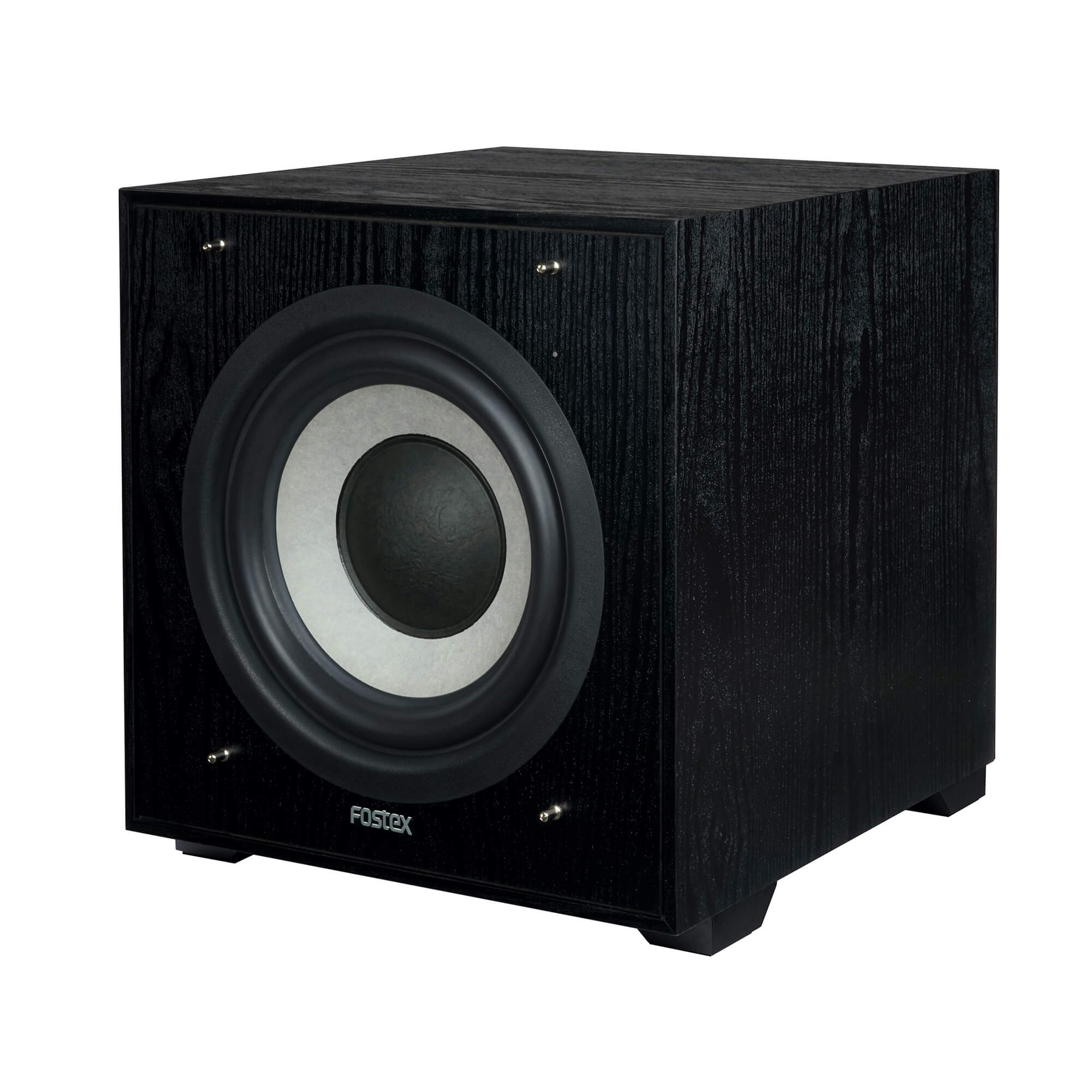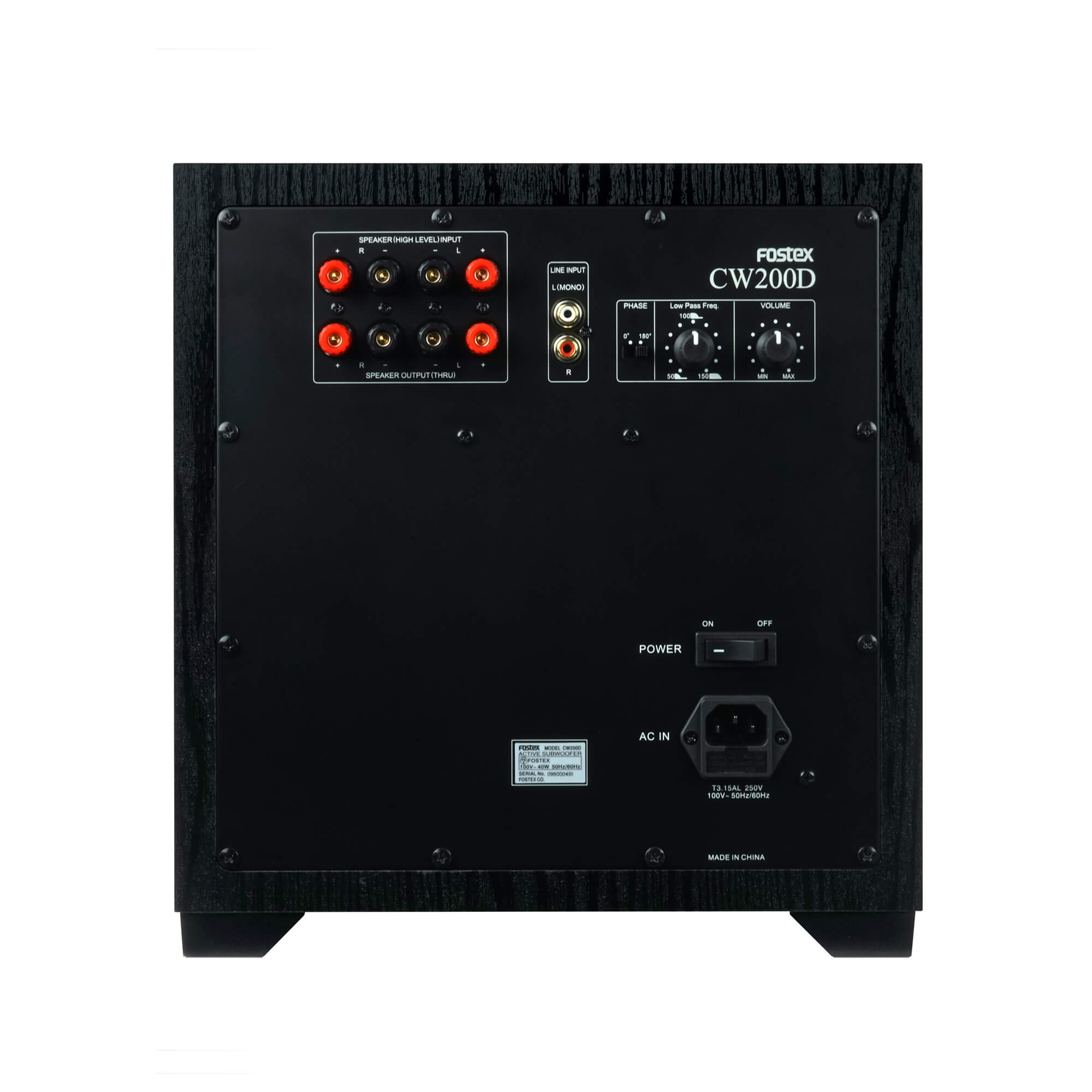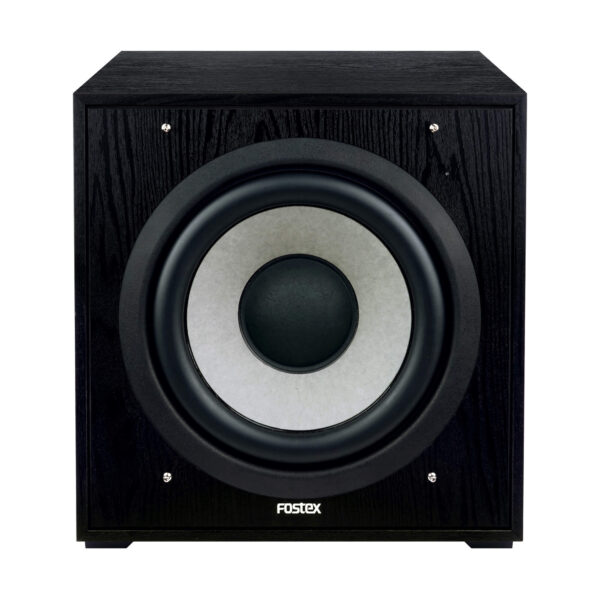CW200D
active subwooferAdd-on subwoofer dedicated to music with improved reproduction of ultra-low frequency range
Features
Sealed cabinet
To take advantage of the PWM amplifier characteristics, the sealed cabinet is designed to reproduce the ultra-low frequency range as accurately as the high-end CW250D. The basic design is a rigid, sealed structure that disperses resonance. To achieve a rich soundstage and deep bass, the baffle board is made of two materials with different characteristics, 18 mm CE plywood (camphor wood/eucalyptus plywood) and 15 mm MDF, to achieve both rigidity and loss, while the rest is MDF (18 mm) to disperse resonance and reduce incidental noise.
25 mm long stroke high efficiency 20 cm woofer
The lowest note of the 5-string double bass, 32 Hz, is reproduced well, and the 16 Hz of the pipe organ can also be felt. The woofer is driven by a high-performance diaphragm made of a mixture of BKP pulp and Kevlar with a powerful magnetic circuit (0.9 Tesla). The edges are made of SBR foam rubber, which is durable, lightweight, and has high internal loss to reduce natural sound.
Various connection methods for musical enjoyment and excitement
Connect the pre-output of the amplifier to the LINE INPUT of the amplifier.
Connect the speaker outputs of the amplifier to the SPEAKER INPUT of the IF1-WF01 and the SPEKER OUTPUT of the IF1-WF01 to the speaker system.
Connect the speaker system to the amplifier as usual, and connect the L and R sides to the SPEAKER INPUT of this unit. Connect the L side and R side to the SPEAKER INPUT of the amplifier.
Use two units, one for each of the L and R sides, for stereo playback.
The low frequency range is also directional, so using one unit on each side will reproduce the realistic sound of a concert hall.
Connection method
Select one of the connection methods (1) ~ (2) shown in the figure for connection. For connection method ①, follow the polarity indications (red +, black -) on the terminals for wiring. Note that the SPEAKER (HIGH LEVEL) INPUT terminal is configured with a balanced circuit, so it can be safely connected even if the amplifier output stage is a BTL circuit.
Connection Method ①.
Connect the speaker terminals of the main speaker (Rch side) to the CW200D’s SPEAKER (HIGH LEVEL) INPUT (R) with the supplied parallel cord.
Connection method (2)
Connect the PRE OUT (R) of the amplifier to the LINE INPUT (R) of the CW200D using the supplied pin cord.
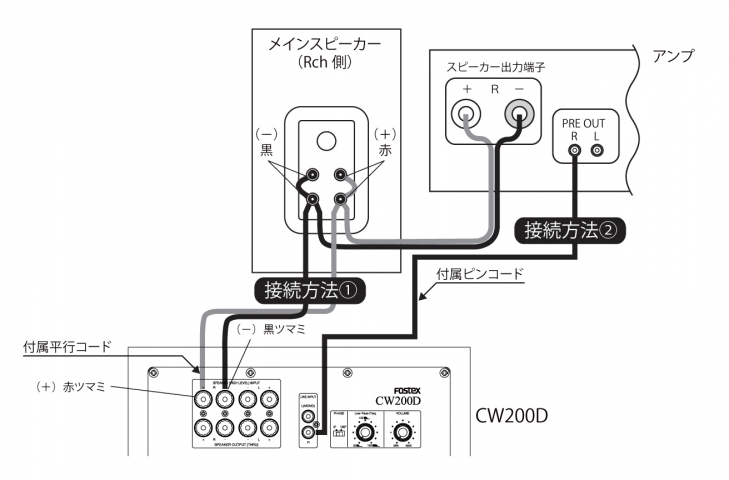
*Be sure to turn off the power to the amplifier before connecting the cord.
Specifications
Main Specifications
| Amplifier section | |
|---|---|
| form (something takes) | Woofer with built-in amplifier |
| Maximum practical output | 150W (JEITA 4Ω) |
| input terminal | LINE IN (RCA pin L-mono/R) input impedance 22kΩ SPEAKER IN input impedance 3kΩ or more (balanced) |
| output terminal | SPEAKER OUT (THRU) |
| Feature | PHASE (0°/180°) Crossover (50 to 150 Hz) VOLUME ADJUSTMENT |
| Speaker section | |
| form (something takes) | Sealed acoustic suspension |
| Speakers used | 20cm cone type (simple antimagnetic type) |
| comprehensive | |
| Maximum output sound pressure | 100 dB/60 Hz (all spaces) 85 dB/30 Hz (all spaces) (+6 dB for floor-mounted) |
| Playback frequency band | 20Hz to 220Hz (-10dB) (at LOW PASS FREQ.150Hz) |
| Power consumption | 40W (10W with no signal) |
| External Dimensions | 300(W)×320(H)×370(D)mm (including protruding parts such as grill and terminals) |
| mass | Approx. 13.1kg |
| accessory | Speaker cord (3 m) x 1 Pin cord (3 m) x 1 Power cord (2 m) x 1 |
Dimensions
